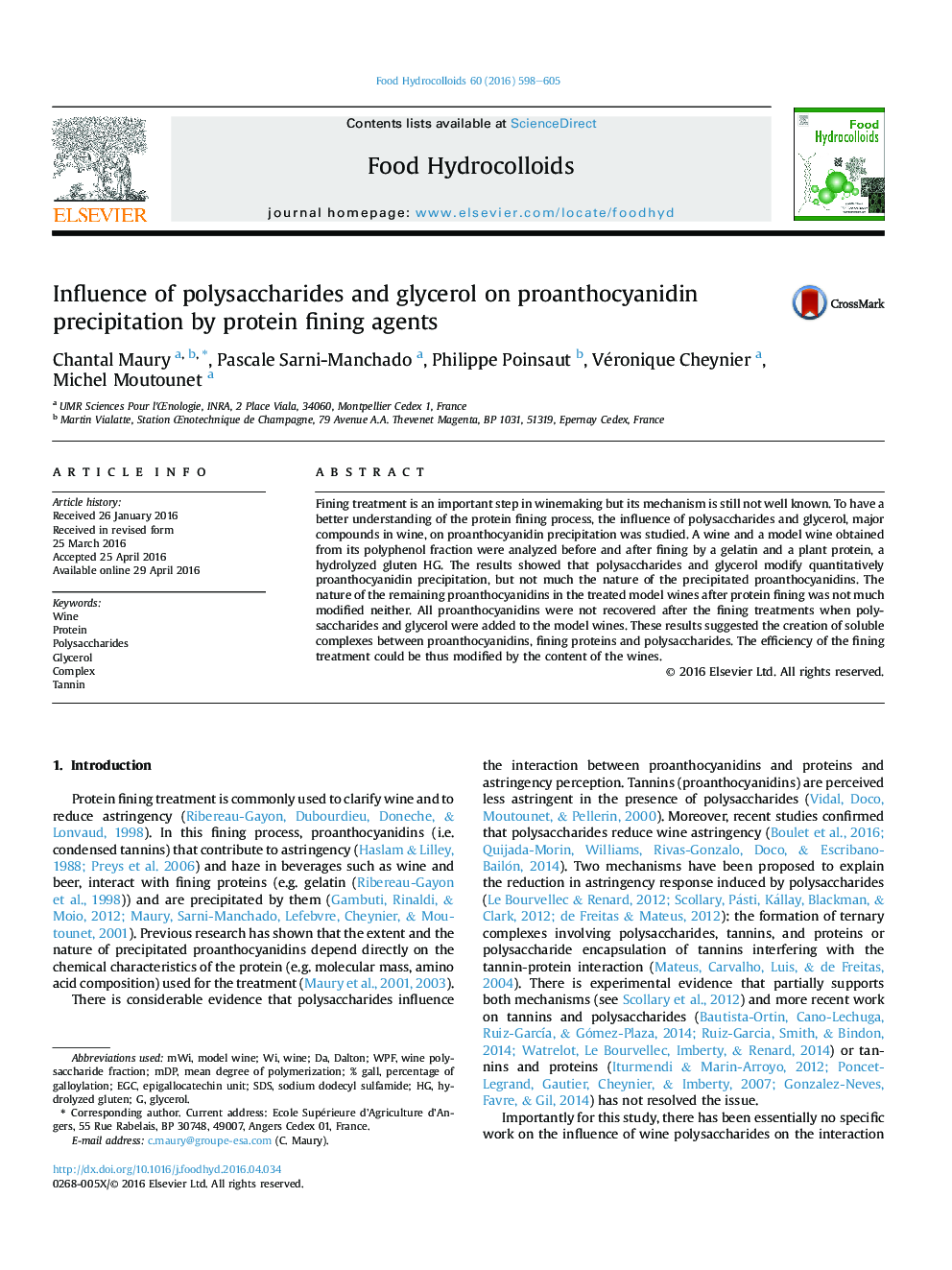| Article ID | Journal | Published Year | Pages | File Type |
|---|---|---|---|---|
| 603613 | Food Hydrocolloids | 2016 | 8 Pages |
•The presence of polysaccharides in a wine modifies quantitatively proanthocyanidin precipitation by fining proteins.•The presence of glycerol in a model wine modifies quantitatively proanthocyanidin precipitation by fining proteins.•Polysaccharides do not precipitate during protein fining.•Soluble complexes between tannins, polysaccharides and fining proteins seem to be created during fining treatment.
Fining treatment is an important step in winemaking but its mechanism is still not well known. To have a better understanding of the protein fining process, the influence of polysaccharides and glycerol, major compounds in wine, on proanthocyanidin precipitation was studied. A wine and a model wine obtained from its polyphenol fraction were analyzed before and after fining by a gelatin and a plant protein, a hydrolyzed gluten HG. The results showed that polysaccharides and glycerol modify quantitatively proanthocyanidin precipitation, but not much the nature of the precipitated proanthocyanidins. The nature of the remaining proanthocyanidins in the treated model wines after protein fining was not much modified neither. All proanthocyanidins were not recovered after the fining treatments when polysaccharides and glycerol were added to the model wines. These results suggested the creation of soluble complexes between proanthocyanidins, fining proteins and polysaccharides. The efficiency of the fining treatment could be thus modified by the content of the wines.
Graphical abstractFigure optionsDownload full-size imageDownload as PowerPoint slide
